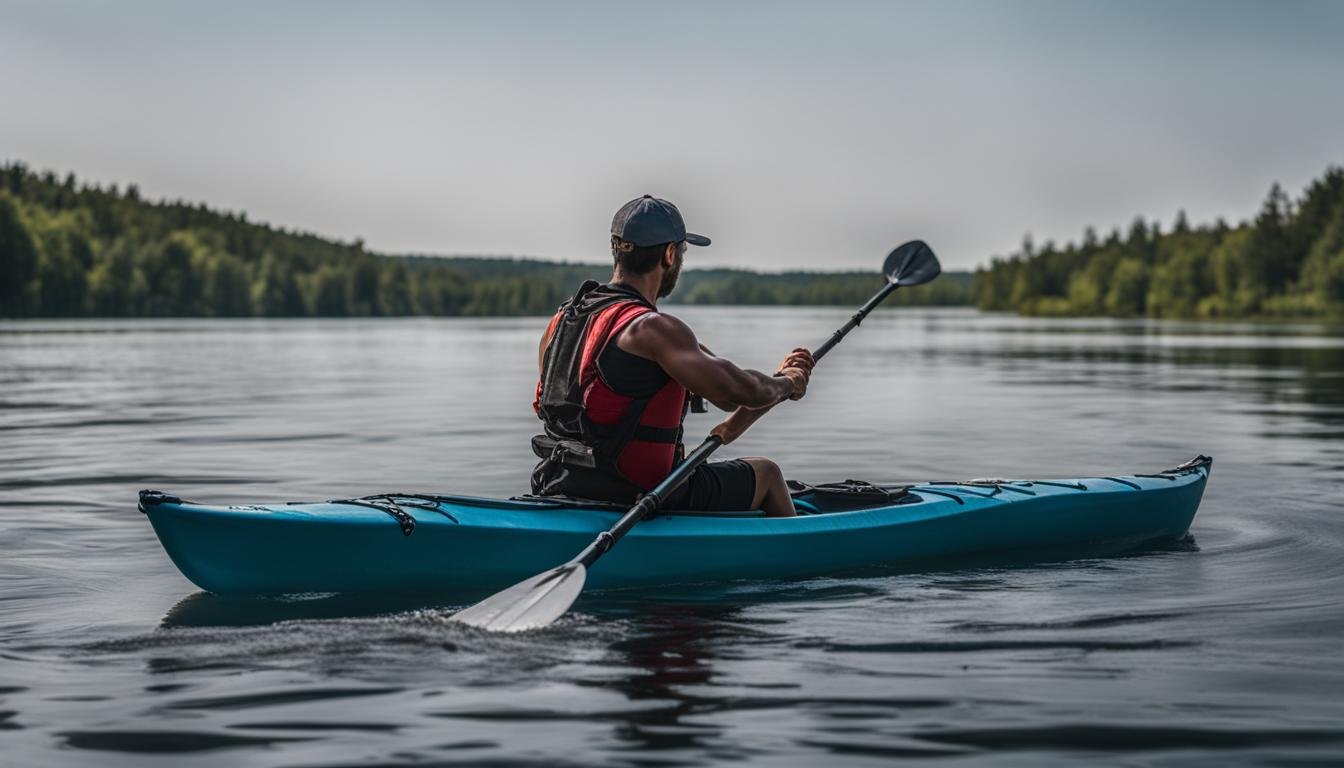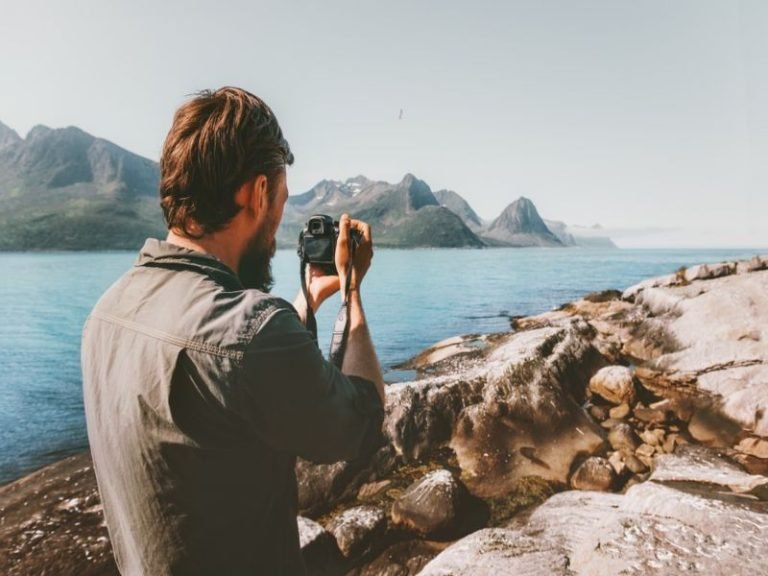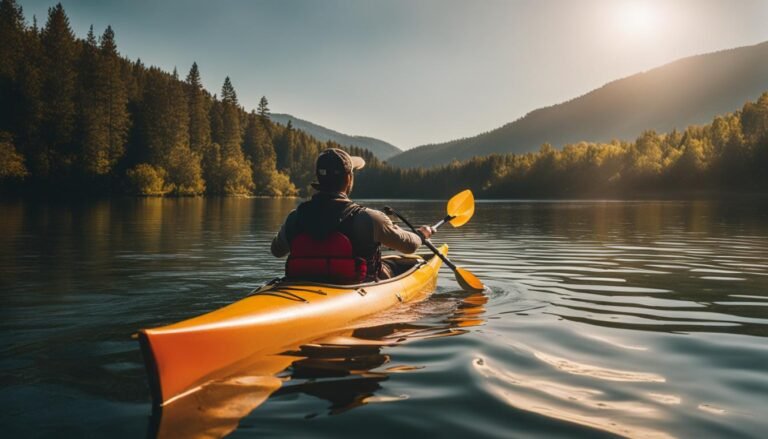Forearm Pain After Kayaking
Kayaking is a thrilling and rewarding sport that allows you to explore tranquil waters and challenge yourself physically. However, it can also come with its share of discomfort, such as forearm pain. If you’ve experienced forearm pain after kayaking, you’re not alone. This article will explore the common causes of forearm pain after kayaking and provide you with valuable insights on how to prevent and manage this discomfort.
Key Takeaways:
- Forearm pain after kayaking is a common issue that many paddlers experience.
- Gripping the paddle too tightly and improper wrist position are common causes of forearm pain.
- Practicing good technique, including maintaining a relaxed grip and neutral wrist position, can help prevent forearm pain.
- Strengthening and stretching the forearm muscles through specific exercises can help prevent and alleviate pain.
- If forearm pain persists, it’s advisable to seek professional help to address any underlying issues.
Preventive Measures for Forearm Pain in Kayakers
If you’re an avid kayaker, you know that forearm pain can be a common issue. But don’t worry, there are preventive measures you can take to keep your arms feeling strong and pain-free. By following these simple tips, you’ll be able to enjoy your kayaking adventures without the discomfort of forearm pain.
Proper Technique
One of the key preventive measures for forearm pain in kayakers is to focus on proper technique. Maintaining a relaxed grip on the paddle is crucial. Avoid the temptation to grip too tightly, as this can put unnecessary strain on the forearm muscles. Instead, aim for a light and comfortable grip that allows for fluid movement.
Additionally, pay attention to your wrist position. Keep your wrists in a neutral or slightly extended position while paddling. This helps to distribute the workload more evenly throughout the muscles of your forearm and reduces the risk of overuse injuries.
Regular Monitoring and Adjustments
Another important preventive measure is regular monitoring and adjustments of your technique. As you paddle, pay attention to any signs of discomfort or strain in your forearms. If you start to feel pain or tension, take a moment to reassess your grip and wrist position. Make any necessary adjustments to ensure optimal form and reduce the risk of injury.
Remember, prevention is key when it comes to forearm pain in kayakers. By practicing proper technique, regularly monitoring your form, and making adjustments as needed, you’ll be able to paddle with confidence and comfort.
Forearm Exercises for Kayakers
Strengthening your forearm muscles is essential for preventing and alleviating forearm pain after kayaking. Incorporating targeted exercises into your routine can help improve grip strength and reduce the risk of injury. Here are some effective forearm exercises for kayakers:
1. Wrist Curls
This exercise targets the muscles in your forearms that control wrist flexion and extension.
- Sit on a chair or bench with a weight in hand. You can use a dumbbell, resistance band, or even a water bottle filled with sand for resistance.
- Rest your forearm on your thigh, palm facing up.
- Slowly curl your wrist upward, bringing the weight towards your forearm.
- Hold the position for a moment, then lower the weight back down.
- Repeat for 10-15 reps on each side.
2. Forearm Pronation and Supination
This exercise strengthens the muscles that control forearm rotation.
- Hold a weight in hand (dumbbell or resistance band) with your elbow bent at a 90-degree angle.
- Keep your upper arm still and rotate your forearm outward, then inward.
- Perform 10-15 reps in each direction on both arms.
3. Grip Strengthening
Improving your grip strength can enhance your paddling performance and reduce forearm strain. Here’s a simple grip strengthening exercise you can do:
- Hold a soft rubber ball or a stress ball in your hand.
- Squeeze the ball as hard as you can, holding the contraction for a few seconds.
- Release and repeat for 10-15 reps on each hand.
Remember to start with lighter weights or resistance bands and gradually increase intensity as your forearm strength improves. These exercises can be done 2-3 times a week, allowing for rest days in between sessions. By incorporating forearm exercises into your training routine, you’ll be better equipped to paddle without experiencing forearm pain.
Stretches for Forearm Pain After Kayaking
After a long kayaking session, it’s not uncommon to experience forearm pain. Luckily, there are several stretches you can incorporate into your post-paddling routine to help alleviate discomfort and promote muscle recovery. These stretches target the forearm muscles, improving flexibility and reducing muscle tension.
Wrist Flexor and Extensor Stretches
One effective stretch for the forearm involves stretching the wrist flexor and extensor muscles. To perform this stretch, extend your arm straight in front of you with your palm facing up. Use your other hand to gently pull back on your fingers, stretching the muscles on the inside of your forearm. Hold the stretch for 20-30 seconds and repeat on the other side. To stretch the extensor muscles on the outside of your forearm, repeat the same motion with your palm facing down.
Forearm Pronation and Supination Stretches
Another helpful stretch targets the pronator and supinator muscles of the forearm. Start by holding your arm straight out in front of you with your palm facing down. Slowly rotate your forearm, so your palm faces up. You should feel a stretch in the muscles on the inside of your forearm. Hold the stretch for 20-30 seconds and repeat on the other side. To stretch the muscles on the outside of your forearm, repeat the same motion with your palm facing up and rotate your forearm until your palm faces down.
Finger Extension Stretches
The finger extension stretch is an excellent stretch for the extensor muscles in your forearm. Begin by holding your arm straight out in front of you with your palm facing down. Gently press the fingers of your other hand against the palm of your outstretched hand, causing your fingers to extend backward. Hold the stretch for 20-30 seconds and repeat on the other side. This stretch targets the muscles responsible for extending your fingers and can help alleviate tension in the forearm.
Incorporating these stretches into your post-kayaking routine can help relieve forearm pain and promote recovery. Remember to stretch within your comfort level and listen to your body. If the pain persists or worsens, it’s important to seek professional help to address any underlying issues and prevent further discomfort.
Treating Forearm Pain After Kayaking
If you’re experiencing forearm pain after kayaking, it’s important to take appropriate measures to treat and manage your discomfort. Here are some strategies to help alleviate your symptoms and promote healing:
- Rest and Ice: Giving your forearm muscles time to rest is crucial for recovery. Avoid activities that worsen the pain and apply an ice pack or cold compress to reduce inflammation.
- Over-the-Counter Pain Relievers: Nonsteroidal anti-inflammatory drugs (NSAIDs) like ibuprofen can provide temporary relief from pain and reduce swelling.
- Physiotherapy or Massage Therapy: Seeking the help of a healthcare professional, such as a physiotherapist or massage therapist, can address any underlying musculoskeletal issues contributing to your forearm pain. They can provide targeted treatments and exercises to promote healing and prevent future pain.
- Proper Rehabilitation: Following a tailored rehabilitation program can help strengthen the forearm muscles and restore flexibility. Your healthcare provider may prescribe specific exercises and stretches to aid in your recovery.
It’s important to remember that every individual’s experience with forearm pain after kayaking can vary. Consulting with a healthcare professional is essential for an accurate diagnosis and personalized treatment plan. They can provide guidance and support to help you manage and overcome your forearm pain effectively.
| Treatment | Description |
|---|---|
| Rest and Ice | Allows for healing and reduces inflammation |
| Over-the-Counter Pain Relievers | Temporary relief from pain and swelling |
| Physiotherapy or Massage Therapy | Addresses underlying musculoskeletal issues and provides targeted treatments and exercises |
| Proper Rehabilitation | Strengthens forearm muscles and restores flexibility |
Remember, it’s crucial to listen to your body and give yourself the time and care needed to recover fully. With the proper treatment and management, you can get back to kayaking without the discomfort of forearm pain.
Tips for Preventing Forearm Pain While Kayaking
When it comes to kayaking, preventing forearm pain is essential for a comfortable and enjoyable experience on the water. Here are some tips to help you paddle pain-free:
1. Focus on Technique
Proper technique is crucial in preventing forearm pain while kayaking. Maintain a relaxed grip on the paddle and avoid gripping it too tightly. Use a hook grip for the bottom hand to distribute the workload more evenly. Keep your wrist in a neutral or slightly extended position to reduce strain on the forearm muscles.
2. Gradually Increase Intensity
If you’re new to kayaking or have taken a break from the sport, it’s important to gradually increase your paddling intensity and duration. This allows your muscles to adapt to the demands of kayaking and helps prevent overuse injuries in the forearms. Start with shorter paddling sessions and gradually increase the time and intensity as your strength and endurance improve.
3. Take Regular Breaks
Prolonged paddling without breaks can lead to muscle fatigue and increased risk of forearm pain. Take regular breaks during your paddling sessions to give your forearms a chance to rest and recover. Use this time to stretch your forearm muscles and shake out any tension.
4. Use Paddles with Ergonomic Grips
The design of your paddle can significantly impact the strain on your forearms. Look for paddles with ergonomic grips that provide better support and reduce the risk of discomfort. These grips are often contoured to fit the natural shape of your hands, offering a more comfortable and secure hold on the paddle.
| Tips for Preventing Forearm Pain While Kayaking |
|---|
| Focus on Technique |
| Gradually Increase Intensity |
| Take Regular Breaks |
| Use Paddles with Ergonomic Grips |
By following these tips, you can significantly reduce the risk of forearm pain while kayaking and enjoy your time on the water to the fullest.
Effective Ways to Relieve Forearm Pain from Kayaking
If you’re experiencing forearm pain after kayaking, there are several effective ways to find relief and promote healing. Here are some strategies to help you recover and get back on the water pain-free:
Rest and Ice
Give your forearm muscles a break by resting the affected arm. Avoid activities that aggravate the pain and allow your muscles time to recover. Applying ice or a cold compress to the area can help reduce inflammation and alleviate discomfort. Aim for 15-20 minutes of icing several times a day to help speed up the healing process.
Gentle Stretching and Massage
Performing gentle stretching exercises can help relieve tension in the forearm muscles. Try wrist flexor and extensor stretches, pronation and supination stretches, and finger extension stretches. Hold each stretch for 20-30 seconds and repeat a few times on each side. Additionally, massaging the forearm muscles can help promote blood flow and alleviate tightness. Use your opposite hand or a foam roller to gently massage the affected area.
Over-the-Counter Pain Relief
If the pain is persistent or severe, over-the-counter pain relievers can offer temporary relief. Nonsteroidal anti-inflammatory drugs (NSAIDs), such as ibuprofen or naproxen, can help reduce pain and inflammation. Follow the recommended dosage guidelines and consult with a healthcare professional if you have any underlying medical conditions or concerns.
Remember to always listen to your body and give yourself time to recover. If the pain persists or worsens, it’s important to seek professional help from a healthcare provider or physical therapist who specializes in sports injuries. They can provide a thorough evaluation, develop a personalized treatment plan, and help you get back to kayaking with strength and without forearm pain.
| Effective Ways to Relieve Forearm Pain from Kayaking |
|---|
| Rest and Ice |
| Gentle Stretching and Massage |
| Over-the-Counter Pain Relief |
Conclusion
Experiencing forearm pain after kayaking is common, but there are ways to prevent and manage it so you can paddle pain-free. By focusing on proper technique and taking preventive measures, you can minimize the risk of forearm pain. Practice a relaxed grip, maintain a neutral wrist position, and avoid overextending your paddle stroke behind your body. These simple adjustments can make a big difference in preventing discomfort.
In addition, strengthening and stretching your forearm muscles is key to preventing and alleviating pain. Incorporate forearm exercises into your regular workout routine to build strength. Stretching before and after kayaking can improve flexibility and reduce muscle tension in the forearms. Taking care of your muscles will help you paddle with ease and comfort.
If forearm pain persists despite your efforts, it’s important to seek professional help. A healthcare professional, such as a physiotherapist or massage therapist, can assess and address any underlying issues. They can provide appropriate treatment and guidance to ensure your recovery. Remember, your health and well-being should always be a priority.
By following these guidelines and taking care of your forearms, you can enjoy kayaking without the discomfort of forearm pain. Paddle pain-free and make the most of your kayaking adventures!
FAQ
What causes forearm pain after kayaking?
Forearm pain after kayaking can be caused by gripping the paddle too tightly, improper wrist position, and extending the paddle stroke too far behind the body.
How can I prevent forearm pain while kayaking?
To prevent forearm pain while kayaking, focus on maintaining a relaxed grip, using a hook grip for the bottom hand, and keeping the wrist in a neutral or slightly extended position. Avoid extending the paddle stroke too far behind the body.
What exercises can help prevent forearm pain for kayakers?
Effective exercises for kayakers include wrist curls, forearm pronation and supination exercises, and grip strengthening exercises. These can be done with dumbbells, resistance bands, or body weight.
What stretches can help relieve forearm pain after kayaking?
Recommended stretches for kayakers include wrist flexor and extensor stretches, forearm pronation and supination stretches, and finger extension stretches. These stretches can improve flexibility and reduce muscle tension in the forearms.
How can I treat forearm pain after kayaking?
Treatment for forearm pain after kayaking may involve rest, icing, over-the-counter pain relievers, physiotherapy, or massage therapy. It’s important to seek professional help for persistent pain.
What are some tips for preventing forearm pain while kayaking?
Gradually increase paddling intensity and duration, use paddles with ergonomic grips, take regular breaks, and practice good posture to help prevent forearm pain while kayaking.
How can I relieve forearm pain from kayaking?
Resting the affected arm, applying ice or a cold compress, gentle stretching, massage, and pain relievers can help relieve forearm pain from kayaking.







